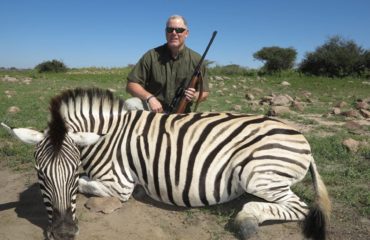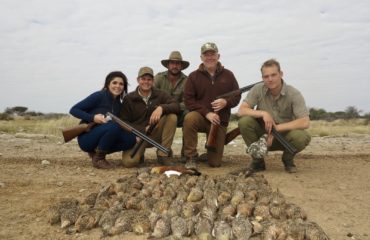Striking scenery. Abundance of game. Namibia is a conservation success story. For hunters visiting Namibia, the chance to experience the magic of abundant and varied game in their natural environment is a experience not to be missed. What makes Namibia so special is that almost half of Namibia is under conservation management, an astonishing 43.7%!
Arguably, the ‘real’ Namibia is to be found outside the national parks in the spectacular landscapes of the communal conservancies. That’s where living with wildlife takes on a special meaning. For generations, farmers and their families have grazed their cattle and goats where wildlife roamed, with inevitable losses to predators like lion, leopard and cheetah. In crop producing areas the hazards are different. Elephants come in the night to eat and trample the precious harvests of maize and millet, leaving hunger in their wake.
Striking a balance between the needs of people and wildlife has not been easy, but a way forward was found in 1996, when the Namibian government enacted new legislation that gave rights to communal farmers over wildlife and tourism in their areas. With the birth of the first four communal conservancies, rural people had a chance to earn a living from tourism.
The balancing act involved conservation, wildlife and private sector partners. In a communal conservancy, the local people run the land just as a commercial farmer does. Trophy hunting is allowed within limits agreed with the Ministry of Environment and Tourism; lodges and camp sites can be built, usually run with private sector involvement; and from both activities the conservancies derive an income for their inhabitants. All of that that comes at a cost – conservation.
In order to build up wildlife numbers, the communal conservancies employ game guards to protect wildlife from poachers. The idea has been so successful that the government has moved valuable species out of national parks and onto communal land. Examples include the previously endangered black rhino, and giraffes; Namibia is the only country in Africa where giraffe numbers are increasing. Where game numbers increase, predators roam, so conservancies are experimenting with self-insurance schemes to compensate farmers for wildlife and crop losses. For people living with wildlife, a new balance has been struck.
Add seventy-eight to the original four, and you can see how successful the conservancy idea has been. There are now 82 communal conservancies covering 19.7% of Namibia’s land. Just as important, many conservancies are adjacent to each other or to national parks, and many commercial farmers have connected their lands to form freehold conservancies. It’s a jigsaw that builds a picture of conservation management at a national scale.
As a tourism destination Namibia provides an extraordinary mix. The parks offer unique environments like the Etosha salt pan and the wilderness of the Skeleton Coast. Private farms such as that established by my father on the Pienaar ranch offer free roaming and challenging trophy game in spectacular landscapes and varied terrain.
In Namibia, tourism and trophy hunting is transforming lives. In addition to the meat from game going directly to hungry families, 1/4 of jobs in Namibia are directly related to travel and tourism which accounts for 15% of our gross domestic product!





You must be logged in to post a comment.